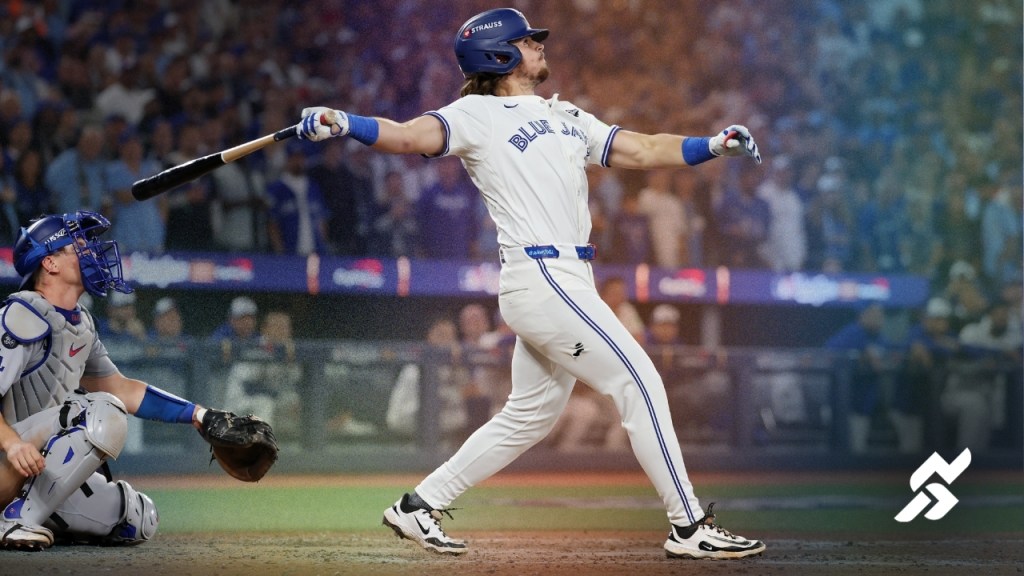TORONTO – The Los Angeles Dodgers have run into a different kind of opponent in this World Series—the Toronto Blue Jays, who just know how to put the ball in play.
The Blue Jays’ contact rate during the regular season was 80.5%, best in MLB. They struck out only 1,099 times, 29th in MLB and just three more whiffs than the Kansas City Royals, who had baseball’s fewest. Toronto’s regular-season strikeout rate of 17.8%, best in MLB, has dropped to 14.8% in the playoffs ahead of the World Series.
And that all came into play in Game 1, as the Jays thrashed the Los Angeles Dodgers, 11-4, at a raucous Rogers Centre on Friday night.
“Pitching is so good these days that contact is at a premium,” Blue Jays’ manager John Schneider said in a postgame interview. “You never know where the ball is going to go off the bat, but making the pitchers stay in the zone is important.”
The Blue Jays scored nine runs in the sixth, including a grand slam by Addison Barger, the first pinch-hit grand slam in World Series history. The team sent 12 men to the plate that inning; nine of them put the ball in play, and the other three walked.
Toronto hit three homers in all—a dividend of how they play the game.
“I think we give pitching staffs different looks,” Schneider said. “And being able to score in multiple ways is big for us, not waiting around for a three-run homer. If that happens, great. That’s kind of icing on the cake, if you will.”
The Dodgers have struck out 106 times in the playoffs to the Blue Jays 68. The Dodgers whiffed 12 times Friday night, compared to the Jays’ four—all by Blake Snell, who had his worst start of the playoffs.
Snell came into Friday’s game with an 0.86 ERA in his three playoff starts—all victories—with 28 strikeouts. Ten of those came in his previous outing in Game 1 of the National League Championship Series against the Milwaukee Brewers, who the Dodgers swept.
But Friday night, the Blue Jays made Snell work. He threw 29 pitches just to get out of a first-inning, bases-loaded situation without letting up a run. He walked two and allowed a base hit. When the Jays put the first three runners on to start the sixth, Snell was gone this time with the bases loaded and no one out.
“Then we got on a roll,” Schneider said.
The Jays have the high-priced stars, including Vladimir Guerrero Jr. and George Springer, but it’s the group Schneider calls “the grunts” that did all the damage in Game 1. Barger, Daulton Varsho and Alejandro Kirk hit the homers. The big guys didn’t drive in any of the 11 runs; they didn’t need to.
Snell was socked with the loss, allowing five runs on eight hits, and his postseason ERA skyrocketed to 2.42.
“I just think Blake didn’t have good fastball command,” Dodgers manager Dave Roberts said. “He was working into deeper counts. When he had count leverage, he couldn’t put them away because they put the ball in play.”
And that’s the point. The Jays’ style of play is counter-intuitive to the analytical bent of the rest of MLB, which focuses on launch angle and playing for the three true outcomes: a walk, strikeout or homer. Toronto’s analytics department tells the player to make contact, and they seek out or develop players accordingly.
“The guys who’ve been around here for a while, the regulars, they all can hit, they all hit for a relatively high average, for the most part, and they all have really good bat-to-ball skills,” Schneider said.
During the regular season, the Blue Jays led MLB with a .265 batting average, 20 points over the rest of the league. In the postseason, they’re hitting .305 with the Dodgers next up at .250. Toronto defeated Seattle in a seven-game American League Championship Series, and the Mariners batted .215 overall in the playoffs.
They beat up the New York Yankees in an AL Division Series, when the Yanks batted .251, whiffing 66 times in their seven playoff games.
Could the Blue Jays’ mission of making contact be the next trend in baseball? “[It] could be. This league sees what happens in real time and makes adjustments,” Schneider said.
May the Dodgers now be wary—Friday night was not a fluke. The Blue Jays have scored 82 runs in 12 playoff games, far and away the most among the 12 teams to qualify for the postseason. The Dodgers are second with 50 in their 11 games. The Mariners scored 49 in their 12.
Contact baseball: It’s old school, and it’s refreshing.
“Everyone gets caught up in OPS and slug and all that kind of stuff,” Schnieder said. “But there’s something to be said about how a lineup unfolds around one another. And I think we’ve really leaned in to that.”

